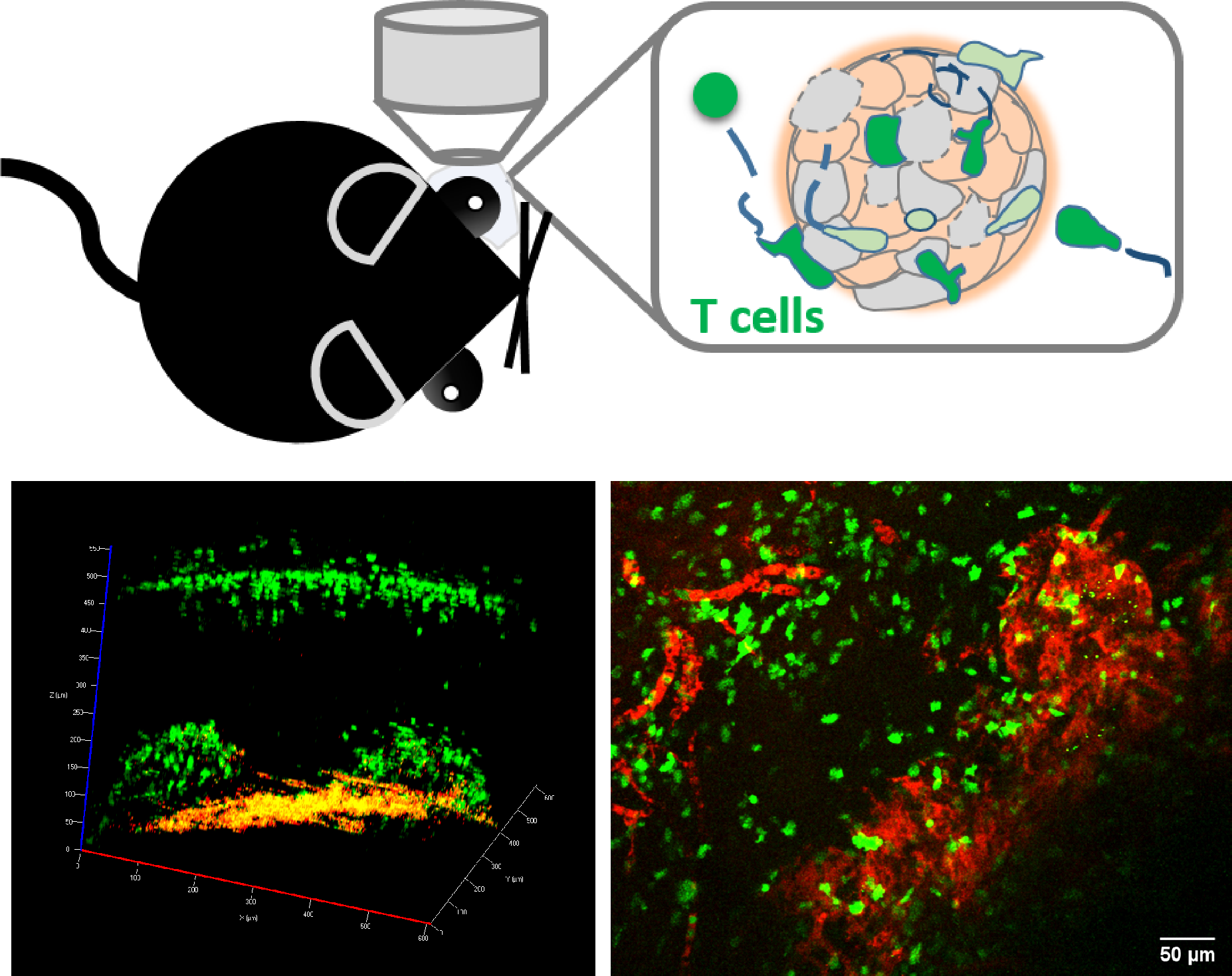Cellular Neurophysiology
Cytotoxic T lymphocytes
Cytotoxic T lymphocytes (CTLs) are an important part of the adaptive immune system. They fight against infections by directed killing of viral infected cells, cancer cells and foreign cells. The cytotoxic substances like perforin and granzymes are released from cytotoxic granules (CG) at T cell-target contact interface, so called the immunological synapse (IS). Over two decades, we have uncovered essential SNARE proteins mediating these release processes, which are the foundation of T cell effector functions. In combination with high-end microscopes (e.g. LSM, SIM, TIRFM, STED, EM, CLEM and 2PM; Fig. 1) and technologies (e.g. mass spectrometry, supported Lipid bilayer, molecular biology and flow cytometry), we investigate not only the molecular details of CG biogenesis, composition, their release and recycle in a single T cell level but also how CTLs coordinate with other cells in immune network through secreted materials (e.g. SMAPs, exosomes, cytokines).
Additionally, we have established anterior chamber of the eye animal model, taking advantage of eye’s transparency to visualize T cell infiltration and allograft immune response in real time (Fig. 2). We aim to implement our in vitro knowledge in living mice to study T cell immunity in the context of allograft rejection. Finally, we also investigate the role of CTLs in neurodegenerative disorders. Our ultimate goal is to understand CTLs effector functions when facing to target cells at different pathological conditions and utilize them for personalized medicine against infections, cancer and autoimmune diseases.
|
Figure 1: CTLs alone, attacking on target cells or allograft pancreatic islet and interaction with neurons. |
Figure 2: Visualize T cell infiltration and their attack on allograft islets at the anterior eye chamber by two-photon microscope. Adapted from doi: 10.3390/ijms21134660 |
|
|
Figure 3: Immune synapse of a mouse CTL and its 3D architecture. |
Cellular
Neurophysiology
provisional management:
Prof. Dr. Dieter Bruns
Secretary
Bernadette Schwarz
|
bernadette.schwarz |
|
| +49 6841/16-16400 | |
| +49 6841/16-16402 |
Cellular Neurophysiology
Saarland University
CIPMM | Building 48
D-66421 Homburg


